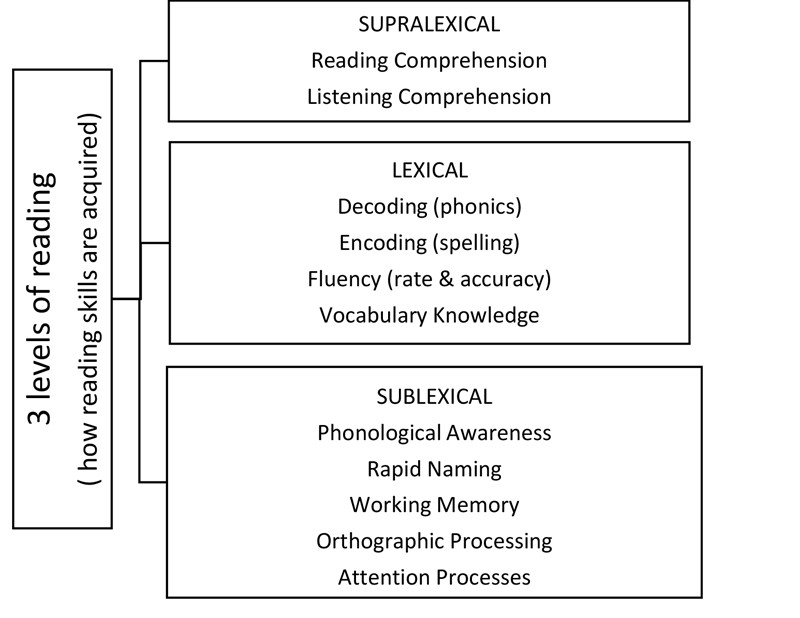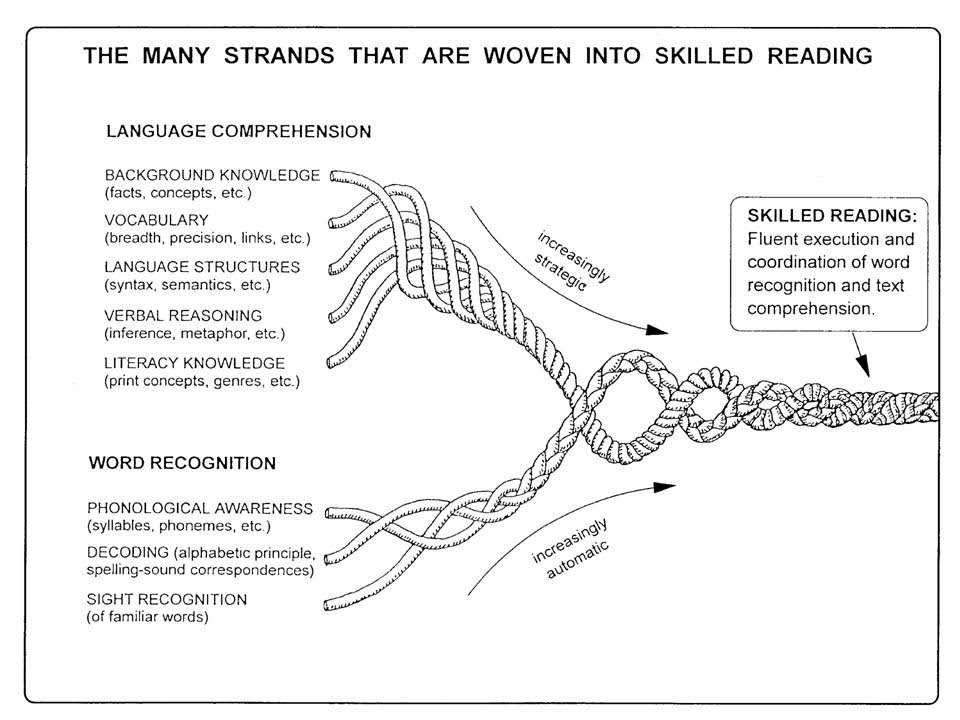DYSLEXIA

Figure 1. This figure shows the method of reading acquisition proposed by Bowers, Kirby, and Deacon (2010). Note the causal issues in dyslexia are attributed to sublexical level; the visible outcomes are those occurring at the lexical level; yet the supralexical level often remains intact.
5-17% of the population, according to meta-analytic studies, have dyslexia (Bishop, 2010; Shaywitz et al., 2008; Shaywitz & Shaywitz, 2003, 2003, 2005). Of those individuals with dyslexia, approximately 40% routinely perform below grade level. Moreover, at least 80% of individuals labeled as learning disabled are actually dyslexic (Shaywitz et al., 2008). Individuals with dyslexia have specific needs and expert intervention is the only way that dyslexia can be overcome!
Treatment for dyslexia at the Reading Connection is a multicomponent program. Multicomponent means that while we implement the requisite structured, sequential, and direct Orton-Gillingham phonological processing, phonics, and spelling curriculum, like typical academic language or dyslexia therapists, we also do more. We go beyond the program to treat the individual needs of each child. We do this by doing a thorough dyslexia evaluation and creating an individualized treatment plan. As noted in the graphic above, we have the only proprietary program that treats underlying deficits in rapid naming as created in Dr. Johnson’s clinical research (link here to my dissertation). In addition, we accommodate for working memory, executive function, and attention difficulties, we treat fluency and vocabulary problems and we teach children the ultimate reason for reading, how to understand or comprehend. Written expression is also a focus of our program and while we include handwriting instruction like typical dyslexia programs, we also teach children and adults to write fluently by utilizing a structured approach to teaching the writing process.
At the Reading Connnection, our formal dyslexia evaluations align with the State of Texas Dyslexia Manual and are regularly accepted by schools in the place of school-based testing. We can often accommodate families who are eager to get started with dyslexia treatment, who have been unable to get school testing or who do not want to wait for school testing to occur. We use standardized norm-referenced measures to evaluate all areas of reading including phonological processing, rapid naming, real and nonsense word decoding, spelling, vocabulary, reading comprehension, and written expression. We also evaluate cognitive ability (IQ) in addition to working memory and processing speed. We screen for common co-occurring disorders including but not limited to dysgraphia, ADHD, Autism Spectrum Disorder, Depression, and Anxiety. After evaluations are complete, parents come in for a feedback and report review. In addition, Dr. Johnson can consult with you school to help create appropriate accommodations for your child’s IEP, 504, private school learning and accommodation plan, or for the College Board (SAT).



